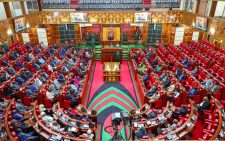What shoddy work says about varsity training

Tragedy helps showcase the expertise of those who work in various fields. Poor workmanship is widespread in recent weeks. We have had cases of poor-quality fertiliser, leaking airport roofs, collapsed buildings, washed-away bridges, and instances of roads that have collapsed even before they are commissioned.
The work was supervised by professionals who have been rigorously trained at our esteemed universities and elsewhere. The Commission for University Education (CUE) ensures that every programme undergoes a stringent certification process, further bolstering the credentials of these experts.
CUE’s concern is not only with the curriculum, which must meet the highest international standards, but also with ensuring that training facilities are up to scratch and that faculties delivering the curriculum are equal to the task.
So, what could explain what we see in the marketplace? Could the preparation of the professionals in whose hands the social structure rests be problematic? How are students being taught at our universities?
A study by the East African Community not long ago found that employers were dissatisfied with the calibre of graduates emerging from the region’s universities. The study suggested that the graduates appeared half-baked, not ready for work.
As is often the case with quantitative studies, they tend to give us big numbers but cannot explain how we arrived at them. Why, for example, do the graduates appear half-baked, not sufficiently prepared for the jobs they seek, when they have gone through an approved programme?
We have to question the instruction that takes place in the academy. Do lecturers go to class to cover their full curriculum? Are the facilities, though approved by the CUE, still what they are supposed to be?
While some graduate programmes, for example, stipulate that they should take two years, they tend to last much longer. The reason is that the faculty is often not available for consultation with their students. They may not read the papers the students submit, provide feedback or be engaged in other assignments at the university. Public universities are particularly notorious for this – faculty who do not turn up in class, broken facilities, and lack of close supervision of the faculty’s work. The other problem is overcrowded classrooms, making it difficult for lecturers to monitor students closely or issue and grade assignments. The bigger the class, the less likely lecturers are to supervise the students adequately. However, this truancy is not limited to public universities. A closer look at private universities suggests this trend is slowly creeping in.
Recently, first-year students at the business school of one leading private university went for nearly four weeks before one lecturer showed up for class. This means that the students missed 12 of the 45 hours required per semester. There was no guarantee that the lecturer would teach the remaining classes. In the first week at this university, every teacher who came to class asked students to network, i.e. to get to know each other, an activity that could be carried out elsewhere.
At another university, a faculty member did not show up in one class for seven weeks. Essentially, this means that the students missed half of the instruction they needed. The students did not have anybody to complain to, as the teacher in question was the dean, the officer responsible for supervising the other faculty members.
The task of maintaining quality is anchored at universities. Examining possible shortcomings in university instruction may be one way of addressing the weaknesses we see in the public sector performance.
The writer is Dean of the School of Communication at Daystar University












